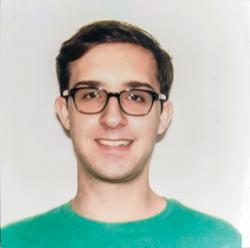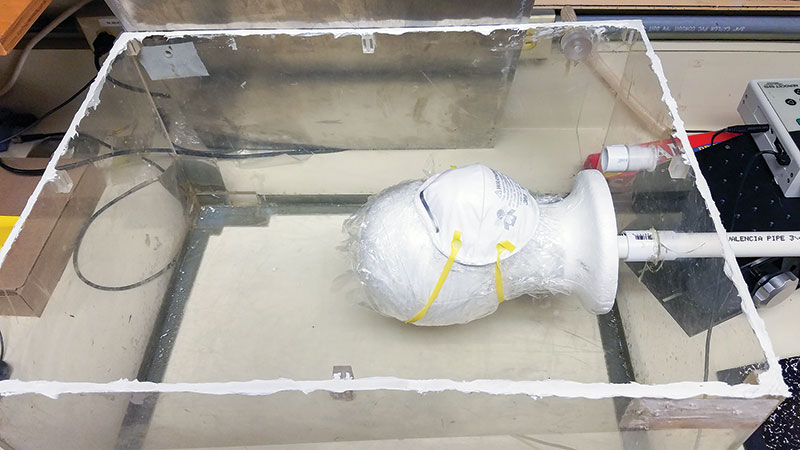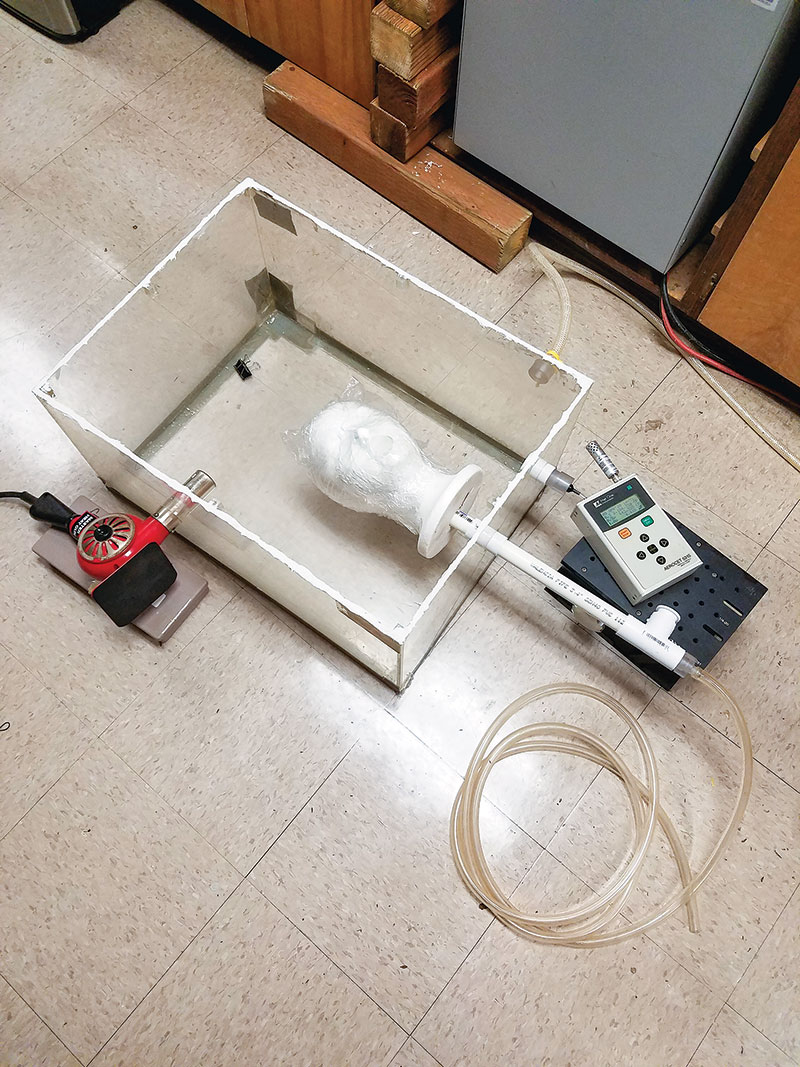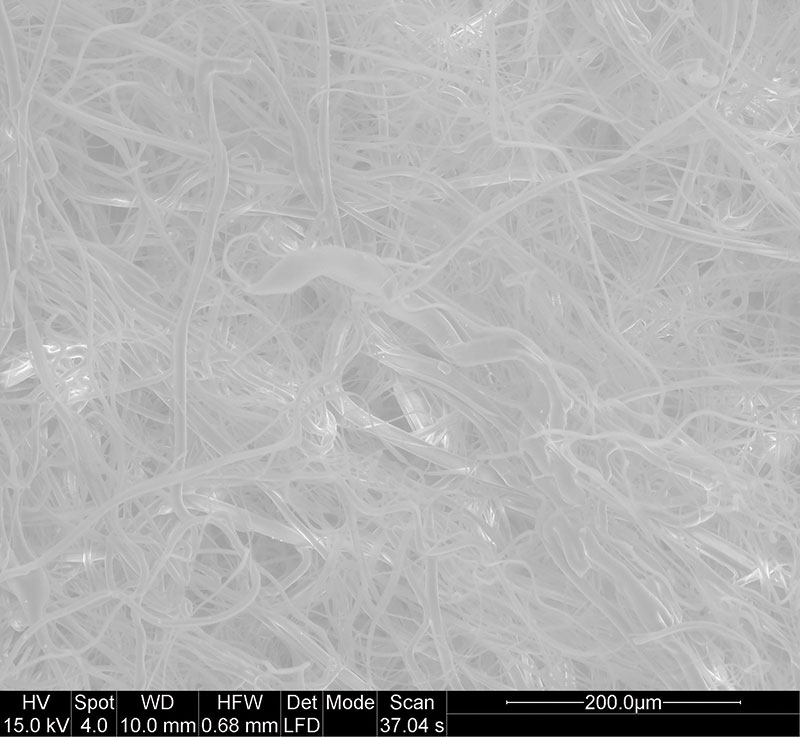Using a Geophysics Lab to Advance the Testing and Cleaning of Face Masks
Fall
2020
Building Blocks - Undergraduate Research and Outreach Projects
Using a Geophysics Lab to Advance the Testing and Cleaning of Face Masks
Albert Nazeeri, Physics Undergraduate, California Institute of Technology
 For the first couple weeks of the shutdown, visiting professor Joe Kirschvink’s geobiology lab was a welcome relief from Zoom meetings and catching up on papers. But there was a certain gloom when visiting campus. Almost all of the labs were shut down, and when I would check in on the Kirschvink lab, I would often be the only occupant of the GPS (Geology and Planetary Science) building. A bustling place only a few weeks ago, the GPS building now sat empty with its horde of scientific equipment unutilized.
For the first couple weeks of the shutdown, visiting professor Joe Kirschvink’s geobiology lab was a welcome relief from Zoom meetings and catching up on papers. But there was a certain gloom when visiting campus. Almost all of the labs were shut down, and when I would check in on the Kirschvink lab, I would often be the only occupant of the GPS (Geology and Planetary Science) building. A bustling place only a few weeks ago, the GPS building now sat empty with its horde of scientific equipment unutilized.
Prior to the COVID-19 pandemic, I had been working in Professor Kirschvink’s lab, investigating how magnetotactic bacteria interact with radio waves. The project was engaging and it allowed me to hone my machining and electronics skills, but the experimental nature of the work meant that the shutdown was not kind to the project. I dragged some parts of the experiment to my apartment, but without access to Caltech’s people and facilities, the pace of the project slowed considerably. In consolation for not having much work to do, Professor Kirschvink gave me the weekly task of checking in on the lab and ensuring that some of his long-term experiments were still running.
All of the now-idle lab equipment led me to consider whether any of it could be utilized for pandemic-specific research. After reading a preprint article out of a Stanford University lab on disinfecting face masks, I realized that the laser particle counter in the cleanroom could potentially be repurposed for measuring particle penetration through masks and respirators. When I shared the idea with Professor Kirschvink, he thought it was worth a shot. After a few emails, the project received division approval.
I gathered the parts I needed with a trip to the hardware store and some scavenging around the lab. After a couple weeks of tinkering and with the tele-help of Professor Kirschvink and Isaac Hilburn-the lab computer guru-I managed to build a working mask tester.
The motivation for the device was twofold: there is a clear need to test the efficiency of masks on the market, and I wanted to see if I could replicate the preliminary mask-cleaning results coming out of Stanford. I gathered a small collection of face masks and respirators through donations and by rummaging through the rock-cutting rooms of the GPS building. Using my tester, I quickly found that some of the N95-equivalent masks from China, known as KN95s, were not genuine. Through a collaboration with Huntington Hospital in Pasadena, California, I helped identify several counterfeit models in the masks they had procured.
During this time I also tested several different cleaning methods on N95s. Previous reports stated that disinfecting N95 respirators with 70% ethanol devastates their filtration efficiency. However, through extensive drying of treated N95s via a vacuum, I was able to restore their filtration efficiency to within two percent of their initial value.
I further investigated this by varying the partial pressure of the vacuum the masks were exposed to and examining the correlation to particle penetration. These findings were replicated on two additional N95 models and a KN95 model. The results led to an ongoing collaboration with a group at Caltech led by Richard C. Flagan to build a mask tester that uses a calibrated aerosol to measure mask penetration and operates at a higher flow rate.
Meanwhile, Caltech was in the planning stages of reopening. Part of the plan included distributing reusable cloth masks to the community, but generally available cloth masks are unregulated and their efficiency can vary considerably from model to model. The facilities staff at Caltech procured many different masks, and with the assistance of fellow research assistant Kabir Mohammed, we measured tens of masks and wrote a report on our findings.
It is unfortunate that mask usage has been politicized during this pandemic, but this project highlighted the science-based benefits and limitations of commercially available cloth masks. Since they are not regulated, cloth masks are not a panacea or a silver bullet for this pandemic, but they are an important complement to the strategy of social distancing.



Editorial assistance provided by Samantha Creech, 2020 SPS Intern, Physics Today.
More from this department
Building Blocks - Undergraduate Research and Outreach Projects
